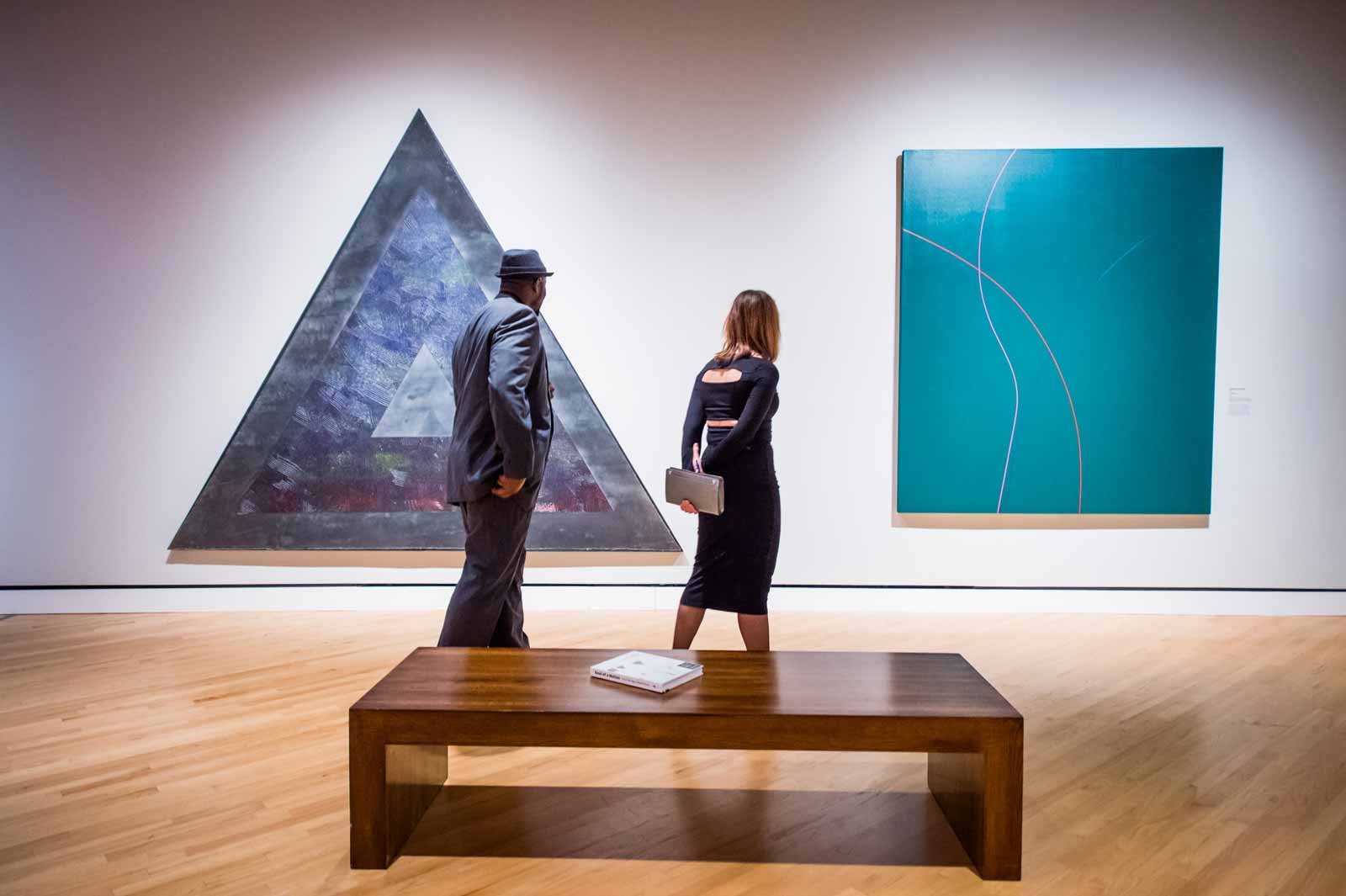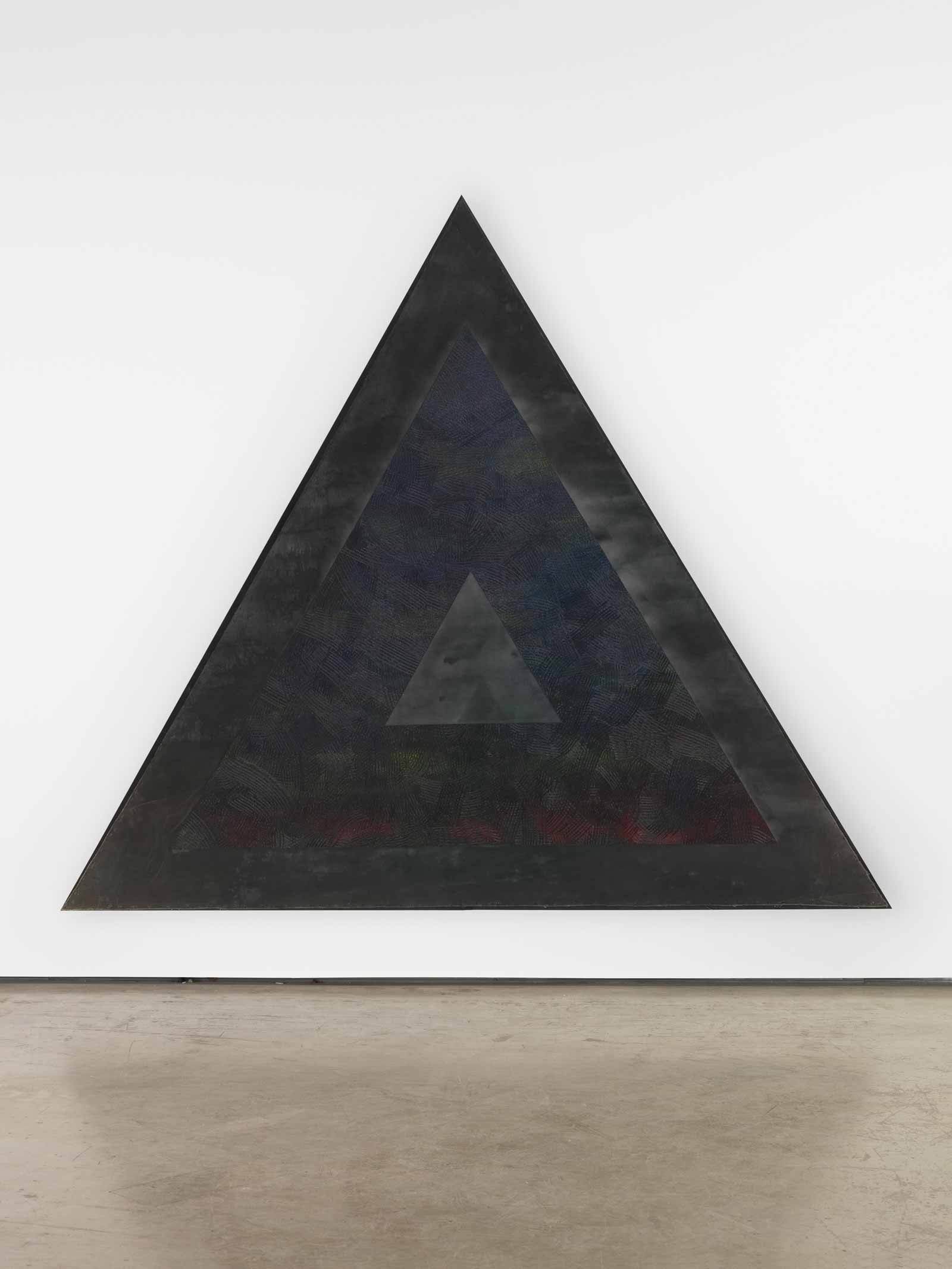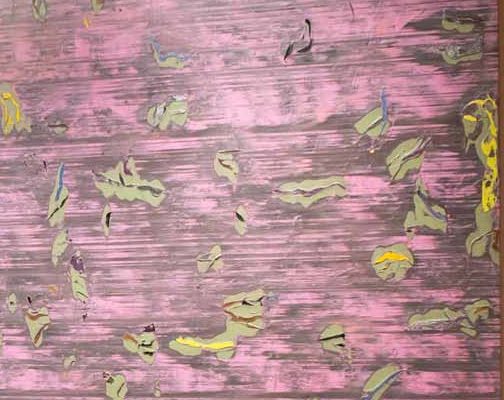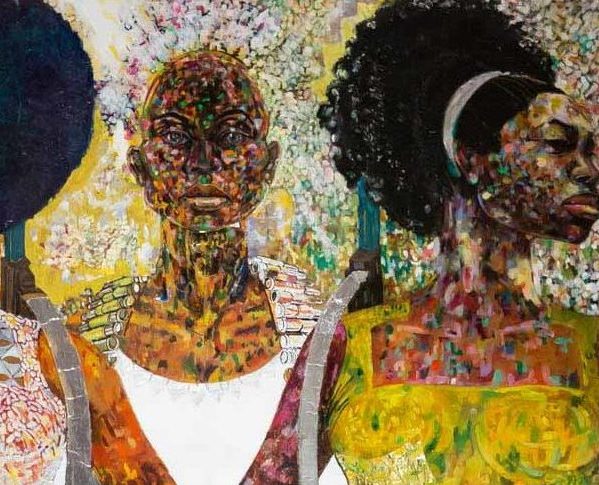Looking at reproductions of art isn’t seeing art. If you want to experience art in the fullness of its materiality, you have to see it in person. You have to see it as it appears in exhibitions—at particular times on particular walls in particular buildings in particular cities or towns.
Given the usual tendency to talk about black art in political and historical terms rather than as objects of art, I felt it was important to see “Soul of a Nation: Art in the Age of Black Power” in person. I didn’t make it to the Tate Modern in London, where the exhibition originated. I could have waited until this fall, when “Soul of a Nation” will come to the Brooklyn Museum. But Brooklyn is home to artists by the thousands and a museum with a distinguished collection of black art. To me, it lacks the mystery of Bentonville, Arkansas, where “Soul of a Nation” went after London.
How would “Soul of a Nation”—this very black art made in the 1960s to 1980s—look in a museum situated in one of the whiter areas of Arkansas? The Crystal Bridges Museum of American Art, founded by Walmart billionaire Alice Walton, is made up of several attractive buildings, thoughtfully and expensively designed by Moshe Safdie and nestled among hilly woods on the northern outskirts of Bentonville.
While the Crystal Bridges Museum feels East Asian in aesthetic style, downtown Bentonville speaks in another design register. Downtown is compact, with neat storefronts surrounding a grassy central square. Fitting in nicely among the storefronts is the Walmart Museum, a 1950s-themed general store and soda fountain where clean-cut young white people serve you with a smile. No hint of the 1960s civil rights sit-ins obstructs this historical reenactment. The Confederate monument (erected in 1908) towering over the town square has caused some well-mannered chagrin among the locals. Everybody is very, very nice, though little children in the soda fountain couldn’t stop staring at me.
Bentonville is the home of Walmart, the world’s second biggest company (after Amazon), with 11,703 stores and clubs in twenty-eight countries, grossing $480 billion in sales. The company has been known for low wages, few benefits, insufficient health coverage, and hostility to unions. The founder’s family is worth some $150 billion, and his daughter, Alice Walton, is one of the wealthiest women in the world, with a net worth of $43.7 billion. In a state where 17 percent of the overall population and a third of the African-American population lives in poverty, there could hardly be a more glaring contrast to the values and material objectives of civil rights and Black Power. The juxtaposition of Walton riches and Black Power’s art of “solidarity with the oppressed peoples of the world”—as one of Emory Douglas’s posters, included in the exhibition, says—was something I had to see for myself.
As it turned out, all was tranquil. Crystal Bridges Museum attracted no “institutional critique,” such as the 1971 controversy when the Guggenheim canceled the show of artist Hans Haacke because of his exposure of the relationship between exploitative wealth and art sponsorship. “Soul of a Nation” opened with videos of activists—Malcolm X, Angela Davis, Martin Luther King Jr., and Stokely Carmichael—but no lines were drawn between their activism and the Walton wealth. Everyone, artists and audience, seemed pleased.
I thought I was well acquainted with the exhibition after my review of the Tate’s catalogue, but at Crystal Bridges, the sheer variety of works stunned me. The limitations of the 10½-inch-by-8½-inch pages of the catalogue had reduced the scale of the works and homogenized them. In true scale, some were huge (by Barkley Hendricks, for instance), others modest (Betye Saar), some flat (Alvin Loving); others projected from walls (Dana Chandler), or sat on the floor (Martin Puryear). Some were clearly didactic (Faith Ringgold), painted flatly in saturated reds and oranges (for instance, the Kool-Aid colors favored by Carolyn Lawrence that exhorted children to “Keep your spirits free”); other pieces conveyed their meanings through materials—leather, cloth, found articles, and metallic collage—that were not evident in the catalog reproductions. Surface textures that had appeared muted in the printed image surged here into detail, only visible up close.
A day-long symposium accompanying the exhibition opening featured talks by Faith Ringgold and Lorraine O’Grady, as well as panels of artists now in their eighties discussing the activism of the 1960s–1970s, networks of friendship and support, and losses suffered since the Black Power era. The abstract painters Melvin Edwards and William T. Williams lamented the absence of their friend Jack Whitten (1939–2018), a member of the cohort of black artists who worked steadily from the 1960s right into the present but only received commensurate professional recognition in the twenty-first century. Whitten symbolizes the real achievement of “Soul of a Nation,” which has reoriented the exhibition of black art away from “sociology,” as the photographer, critic, and exhibiting artist Dawoud Bey put it, and “towards the object”—that is, toward art as art.
Advertisement
One work that is strikingly different when seen in person is Whitten’s Homage to Malcolm (1970). Prior to “Soul of a Nation,” Homage to Malcolm had been stored in Whitten’s studio, unsold. In the catalog, Homage to Malcolm appears as a triangular shape consisting of three dark triangles, each one inside the next. In reproduction, you can hardly make out what is clear here—a sharp contrast between the nearly bare canvas’s cloudy wash in the center and, around it, the thick, deeply scored acrylic paint. These textured lines, inflected with green in the middle and red at the bottom, were made with an Afro comb.
I was able to get close to Whitten’s Asa’s Place (1973), which is displayed next to Homage to Malcolm and demonstrates Whitten’s pioneering use of acrylic paint with collage. He used acrylic practically as a sculptural medium, with techniques that foregrounded the materiality of painting.
Jae Jarrell’s Revolutionary Suit (1969; remade 2010) is composed of wool, suede, silk, wood, and pigment. Produced in Chicago in the AfriCOBRA artist collective, Revolutionary Suit evokes a generalized black struggle for freedom, and the bandolier, a favored symbol of the time, shows the struggle as an armed one. In place of bullets, however, Jarrell inserts brightly colored tubes of pigment from the artist’s tool kit.
One of the most widely reproduced works of the Black Power era, Jeff Donaldson’s Wives of Sango (1971), also came out of AfriCOBRA. In addition to displaying the high-keyed color and intense patterning characteristic of the collective, Donaldson’s work also signals armed struggle through the motif of the bandolier. Once again, I found something I’d missed in the reproduction: Donaldson’s use of gold and silver foil, in addition to acrylic paint on cardboard, emphasizes the metallic nature of armament and costume.
Donaldson’s metallic armaments are representative of the exhibition’s selection of works that demonstrate militancy as armored against racial violence rather than as armored with, say, a critique of economic exploitation. Even the figure in Emory Douglas’s What is a Pig?, a favorite theme and image of the Black Panther Party, is more policeman than plutocrat. The lack of clear engagement with issues of economic exploitation may explain the ease with which “Soul of a Nation” fits—as a celebration of racial empowerment—in a gorgeous art institution built with Walmart wealth. An amalgamation of art and money as old as the history of fine art.
“Soul of a Nation: Art in the Age of Black Power” is on view at the Crystal Bridges Museum of American Art through April 23, after which it will open at the Brooklyn Museum. The accompanying catalog is published by the Tate.









